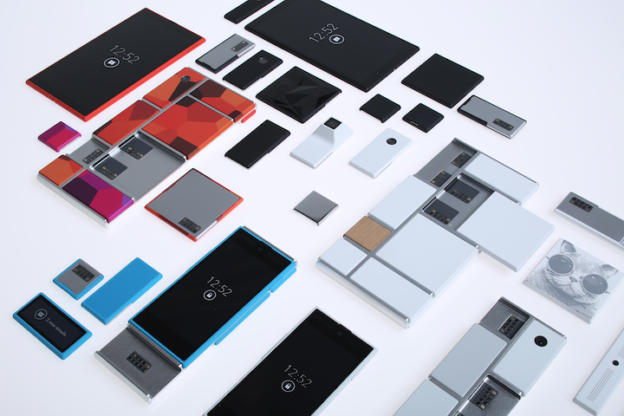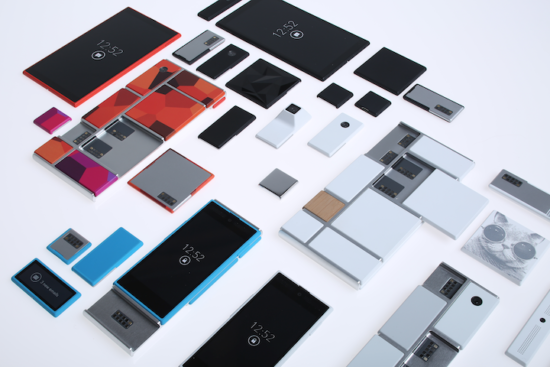In 2013 just after Dave Hakkens announced a modular phone concept called Phonebloks, shortly afterwards Motorola (owned by Google) announced Project Ara and stated how they would be working in collaboration with Phonebloks.
The concept from both seemed too good to be true. The modular mobile phone, a step away from the incremental updates offered by Apple, Samsung, and others. No longer would you need to replace your entire phone every two years to have the latest most cutting edge technology, all you need to do, is change the blocks you have installed, whenever you felt, for whatever you need.
Information pertaining to Project Ara has been few and far between, with the a prototype dubbed the “Spiral 2” rearing its head in 2015 and being slated for test marketing in Puerto Rico that ended up being delayed indefinitely. Since then pretty much silence from the project.
Until this year. At the Google I/O conference 2016 they announced the “Developer Edition” of their modular phone concept. With this reveal came a plethora of details into how they plan for the device to work and a provisional release date for a “Consumer Edition”.
The phone is different from the initial Phonebloks concept yet somehow very similar. The device now comprises a base unit comprising all the important internals that Google claim people either don’t care about or don’t want to think about changing. The RAM, the processor, the memory, all comprised within the base unit. The idea now is have that base unit filled with connection ports that you attach any of the myriad of modules to.
That’s the beauty of Project Ara. The Modules. The aim for the project, is to create a growing, fluid, smartphone eco-system. A system anyone, anywhere can contribute to in any number of ways. You want a bigger camera on your smartphone? Disconnect the current one and put a module with a greater quality camera in its place. You want something more akin to a kindle for reading on the train? Swap the screen module out for an E-Ink display.
As far as Google and Dave Hakkens is concerned, this is the future. Even if it isn’t quite the future Dave Hakkens saw when he created Phonebloks, it is going in that direction.
You aren’t just restricted to your basic smartphone equipment either. Pill case modules, makeup modules, compass modules, a module comprising a stand; it’s all possible. At least that’s the idea. It’s a future envisioned where smartphone creation isn’t left to the mercy of the large tech conglomerates. It’s a future where any company, regardless of size, can create modules for smartphones. It’s a start of that eco-system.
As if it sounds too good to be true, the system seems to work. The idea of “hot-swapping” modules on the fly to suit whatever situation you’re in seems to function. At I/O 2015 Rafa Camargo the current project lead of Project Ara stood in front of the crowd, swapped out one module for a camera (while still using the phone) and snapped a picture of the crowd.
It was a phenomenal moment in the design of modular smart phones. It proved they worked. The only downside, if it can be called a downside at this point, is the connectors aren’t universal. They’re Google developed, anyone developing modules for Project Ara must incorporate the technology that Google deems appropriate or necessary.
There’s a real fear, from the Phonebloks creator in particular, that as opposed to a new generation of entirely compatible smart phones. It’ll fall into the same pattern as the old system, where frames are developed by the large tech companies, and anyone building modules is beholden to their whims.
Only time will tell. This could be the cusp of a brand new smart phone revolution, something to change up the status quo; or it could fall flat on its face. Either way, modular phones are about to be here. Innovation is about to be key once more, we will once again be back to the days of throwing everything at the mobile phone as a platform and seeing what happens to stick. The future of smart phone technology is looking brighter than it ever has.

